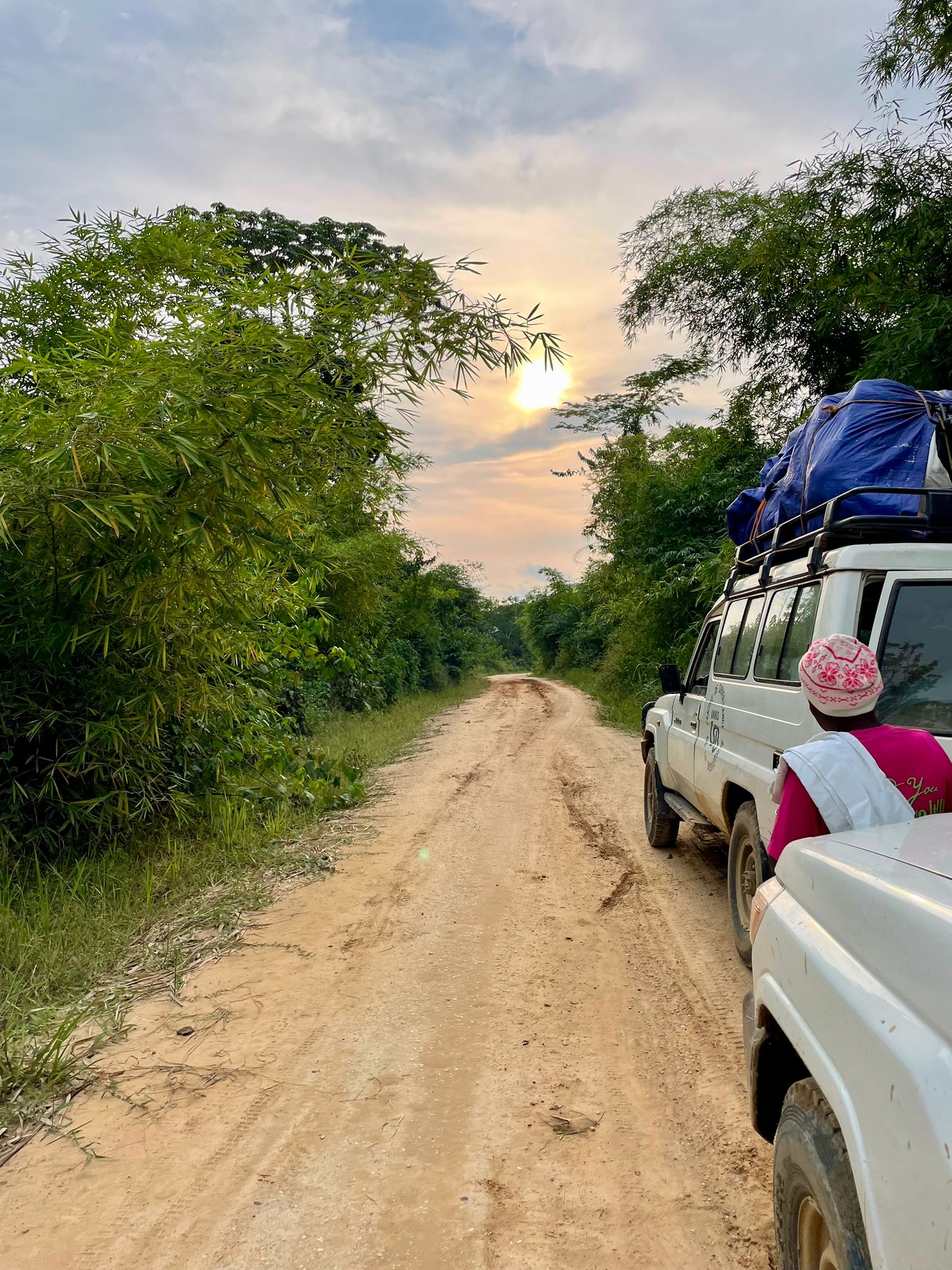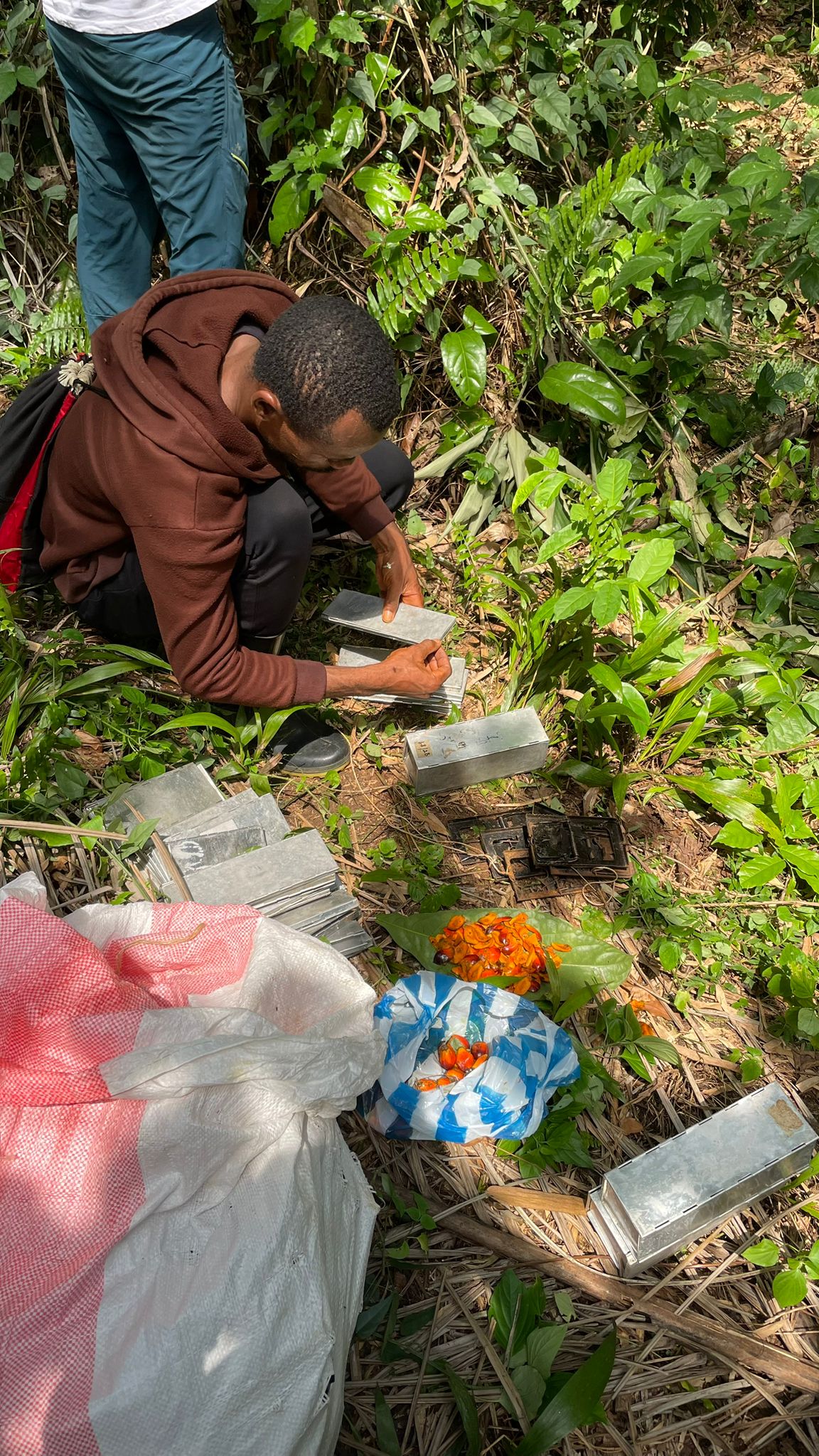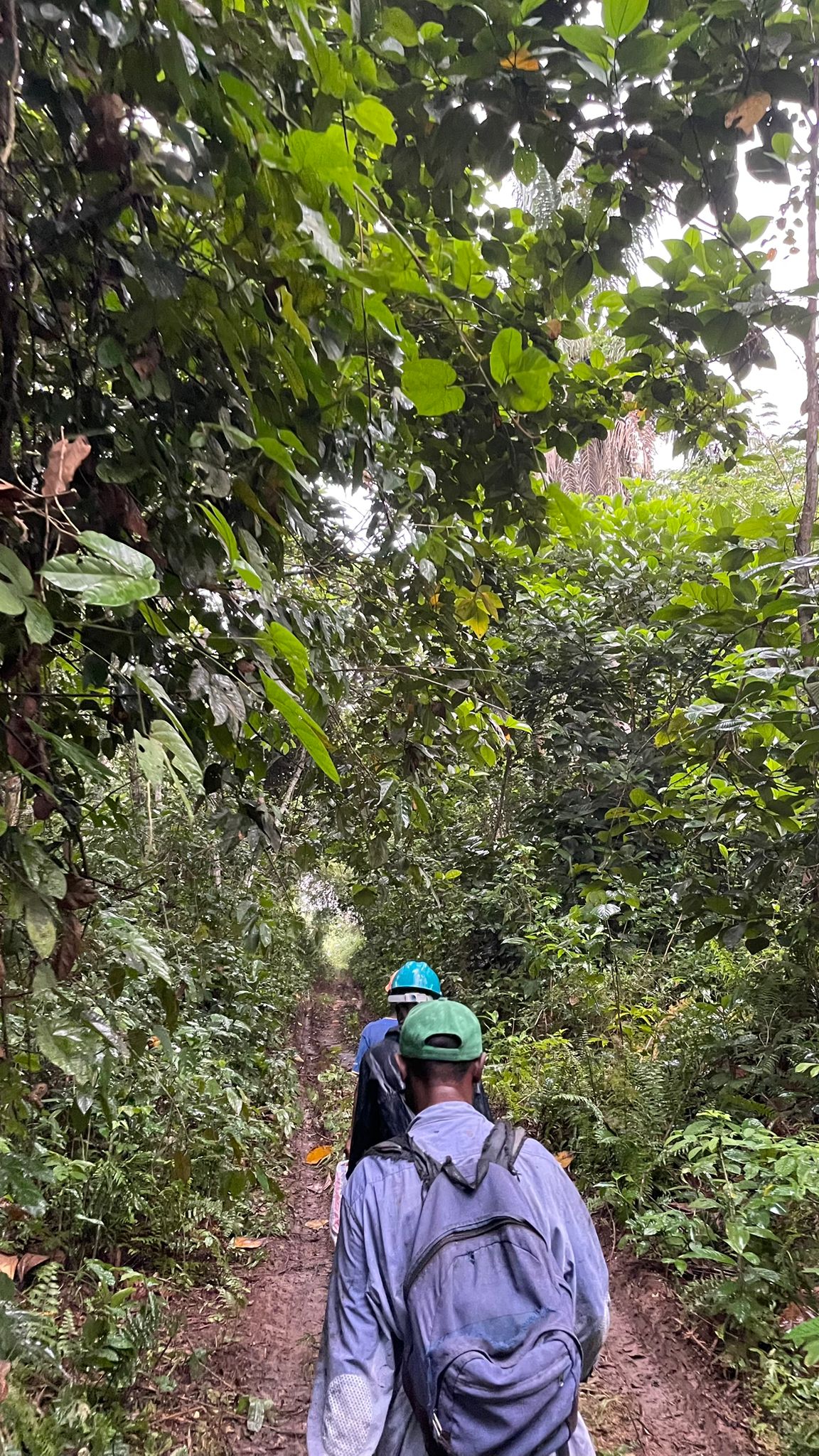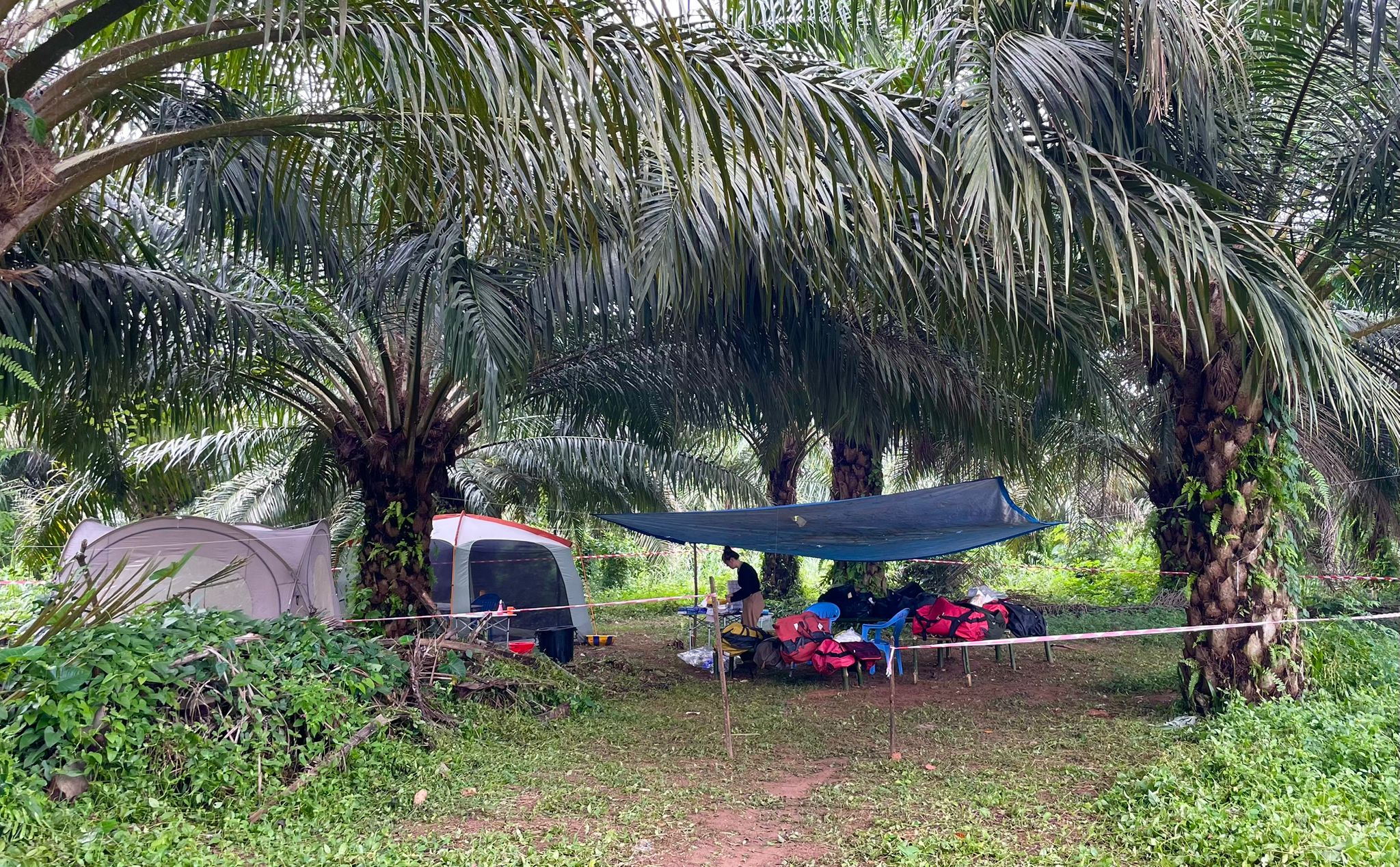Exploring the effects of ecosystem restoration on zoonotic disease risk in the Yangambi Biosphere Reserve, DR Congo
by Cato Vangenechten
In May and June 2024, a team from the University of Antwerp, together with local partners from the University of Kisangani and the Centre du Surveillance de la Biodiversité, embarked on a fieldwork mission to the Yangambi Biosphere Reserve as part of the RESTOREID project. Our goal? To investigate how healthier environments, shaped through landscape restoration, can help mitigate the risk of zoonotic diseases.
To achieve this, we captured small mammals and employed a range of biodiversity monitoring techniques. These included collecting carrion flies and swabbing vegetation for environmental DNA to assess vertebrate diversity, and recording both audible and ultrasonic sounds to assess species presence in the area.

Picture Taken by Cato Vangenechten
Settling into Yangambi: A Warm Welcome
Upon our arrival in Yangambi, we were greeted with incredible hospitality from the local community. Our home for the coming days was the local parish, a simple yet welcoming space that served as our basecamp. Each morning, we woke up to the sound of church music—a surprisingly peaceful and pleasant way to start the day before heading into the field.

Picture Taken by Cato Vangenechten
From capture to sample
The morning after our arrival, we divided ourselves into four groups, each tasked with setting up small mammal traps in different forest plots. These plots, spread across the reserve, represent various stages of ecological recovery - some just five years into restoration, others with over 150 years of regrowth. Over the following days, we checked the traps daily and collected the captured individuals. We repeated this process for seven consecutive trapping nights, after which we implanted a rest day before setting up traps in new forest plots.


Pictures taken by Emilie Goossens.
However, fieldwork was not just about checking traps. While some of us carefully retrieved the captured individuals, others focused on the different monitoring techniques. Setting out bait to attract carrion flies may not sound glamorous, but these insects help us understand which vertebrates are present in the ecosystem. Meanwhile, AudioMoth recorders were strategically placed to capture both audible sounds and ultrasonic vocalizations of the surrounding wildlife. Swabbing vegetation provided yet another layer of data, helping us detect the presence of different species in the environment.

Pictures taken by Emilie Goossens.
After returning to the parish for a quick lunch, our work continued. Wearing protective gear, we carefully collected organ samples from the small mammals we had captured that morning. Some afternoons stretched on for hours, with sweat-soaked clothes and fogged-up goggles becoming part of the routine.
Beyond dissections, there was plenty of other work to be done, such as labelling tubes, filling in datasheets, and organizing samples. Despite the long hours, we were well taken care of by our ‘mama’, who made sure we had warm, nourishing meals for both lunch and dinner.
Closing the Expedition: Hard Work and a Well-Deserved Celebration
Each evening, we gathered for a team meeting to discuss the day’s findings and prepare for the next fieldwork day. While there was a lot of work to be done, there was also time to unwind—sharing stories, reflecting on the day’s experiences, and enjoying the peaceful nights in Yangambi.
On our final evening, we celebrated the end of the fieldwork with a small party—a chance to relax, appreciate everything we had accomplished as a team, and enjoy one last night together before heading home.
Picture taken with the fieldwork camera.
Next Steps: From the Field to the Lab
With the fieldwork completed, the next phase of the project begins. The collected samples were successfully transported to the laboratory of the University of Antwerp, where they will be analysed and screened for pathogens. This crucial step will help us understand the potential presence of zoonotic diseases in different ecosystems and assess how landscape restoration influences disease risks.
Our time in the Yangambi Biosphere Reserve was both challenging and rewarding. We left with valuable data that will help us better understand how ecosystem restoration impacts biodiversity and, ultimately, how healthier environments can reduce the risk of zoonotic disease spillover.
Video by Joachim Marien
